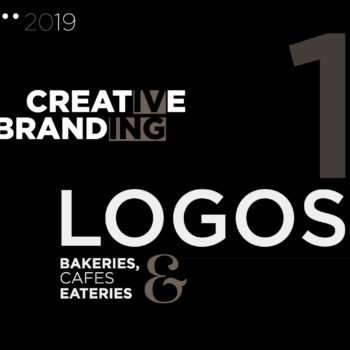In 2020, Covid-19 has been a sudden attack on human life and the marketing world. Considering the sudden halt we are facing, marketers are sailing through this time with digital marketing. No doubt when Zoom calls are the new meeting rooms, e-commerce is the new Mall and social Media is the new Advertising Space, this is the perfect time to pay attention to your long lost Digital Marketing spark and optimize it. The shift to the digital mode of marketing will be beneficial not only in 2020 but in the long run. The digital platform is acting as a medium to connect the two parties virtually that is marketers and audiences. Therefore, it must be utilized well.
One of the major key benefits that we have in modern society, that hasn’t been available in pandemics of the past, is the Internet, and increased connectivity, which has enabled many brands to continue marketing operations.
However, a lot of brands are facing digital marketing challenges and looking for tips to grow their digital marketing strategy going forward. And if you are one of them, then trust me, you are limiting your brand in both reach and repetition. You may be ecstatically unaware of new marketing trends, but remember your target audience and your competitors—are not. Now I am sure you must think, what are the updates happening in digital marketing during 2020? What is the relevance of these trends to your brand? How to choose the right plan for your Brand? A before you move to another tab to search let me tell you – we have it all for YOU. In this article, we will help with you not only with digital marketing trends in 2020 but also tips and tricks to achieve them.
1. Social Commerce

Gone are the times when you found an amazing pair of shoes on social media and went on an e-commerce platform to shop.
Social commerce is blurring the line between social media and e-commerce in 2020. It is changing the way consumers shop, and the way they prefer to make purchases essentially, it brings e-commerce functionality directly into social media platforms, allowing customers to shop directly from the feeds or stories of their favourite social media platform. Reportedly, 55% of the online shoppers said they’ve bought directly through a social media post, and the trend positioned to grow rapidly in 2020.
It will be not wrong to say Social media is turning into mini search engines of its own. People are no longer using these platforms solely for entertainment purposes; they’re now using them to inform their purchasing decisions.
Now it is very important to understand the thin line which lies between Social Media and Social commerce. Social commerce differs from social media marketing, where your goal is to drive traffic from social media to your website or online store by increasing purchasing power. With social commerce, you’re not redirecting users to your online store, instead of giving them the ability to checkout directly within the platform.
How does it work?
Well, there is no Rocket – Science behind it. You just need to upload a directory of products and tag any products you share in posts. When a user clicks on the product link, they are directed to an in-app landing page where they can make a purchase.
From Instagram checkouts to Facebook Buy Buttons to Instagram Shoppable Stories, you have plenty of options to choose from. Choose the channels that best fit your audience, use strategic audience targeting with your posts, and don’t forget to analyse your results. For example, if you are an apparel brand, Instagram suits your brand the best.
2. Programmatic Advertising

It will be not wrong to say that Programmatic Advertising is the Future of Media Buying. In case, if you haven’t yet heard of the term ‘Programmatic Advertising’ or know how it works, you need to catch up with the times. Traditionally, buying and selling display advertising on the Internet worked a lot like display advertising in OOH, print, television, and other more oldfangled mediums. It simply required interaction between an advertiser and a salesperson, the negotiation of purchase of ad space, and so on. Essentially, it needed two humans, speaking with each other. However, this is not the case with Programmatic Advertising.
Programmatic advertising is changing the way online display advertising and other oldfangled mode works.
How does it work?
Programmatic simply allows preparing insertion order (IO) or an ad tag, with the help of software. IO is a written authorization to publish or display an ad. Generally, it includes,
- info regarding the date of insertion
- number of insertions in a specific period
- ad format and size
- ad placement, that in the header, side, bottom or over the content
Once an ad is bought with programmatic advertising, then the algorithms evaluate user analytics, on the different parameters. These usually include Behavior, Engagement level, Social engagement, Location and time per visit.
This data helps the system in planning and examining what ad content is relevant to a particular user. Accordingly, the ad is displayed as an impression on the page. The aim of the ad is to attract the user to click on it.
For example, a user is scanning some blog related to “dog food”. The ad tech system evaluates the user and displays an ad related to “discounts on dog food item” or related.
3. Micro-Influencer Marketing

Influencer marketing has been doing the rounds for a few years now. And for sure it’s much more than just a buzzword.
Now 2020 is here, and “influencer marketing” shows no signs of dying down. But there has been a new approach in the way brands approach influencer marketing. Where once it was all about the getting the biggest names, now it’s about finding influencers with a smaller yet highly engaged following and engagement. Of course! The investment is less but ROI is great in this case. The latest data shows that micro-influencers, influencers with 10,000 or less than that, are getting the best results for brands and businesses. Also, just think they have fewer followers; they can dedicate more personal time to each one. Apart from that it’s easier to specialize in a niche with micro-influencers, as they often represent niches themselves.
How does it work?
Find the suitable Micro influencers for your brand. Nothing can be more apt than analyzing their social media profile. Also, there are many tools to help you find influencers who are engaged with your industry or products like yours. It’s important to find influencers who not only engage with products like yours, but who also have the target audience that matches yours. Keeping track of your interactions with influencers and managing your relationships is always a brownie point. More often than not, a spreadsheet doesn’t cut it.
4. Polished & interactive emails

We all know that Email inboxes are more crowded than ever before. It become tough to gain attention via email, there are ways to stand apart. But by using interactive content, you can grab the attention and delight your readers.
Interactive content is a great way to engage customers and can encourage them to share more information with you. 81% of content marketers believe that interactive content grabs more attention than static content.
For example, Paradigm Life has a Financial Literacy Quiz to help their audience take their financial knowledge test. If Paradigm Life encourages subscribers to take this quiz via email, subscribers will be excited by the offer. When they visit the calculator, they’ll be prompted to enter information that the Brand can then use to segment and personalize future marketing efforts.
How does it work?
It simply needs creativity. There are many ways how you can execute it. One way is through the use of GIFs. GIFS are probably the most frequent example of interactive content in an email, linking to videos or other interactive experiences. You can also hire a proficient Designer and let his/her creative juices flow.
5. Talking to Gen Z on their terms

Last but not least, marketers in 2020 are welcoming the latest consumer group, Generation Z. Those born just after the turn of the century are now turning 18 and are the future customers. Tip of advice please don’t confuse them with Millennial.
In all seriousness, Gen-Z wants to see real and relatable people in marketing campaigns. The people in your ads need to share the relatable stories or have the same beliefs as your Generation Z audience. So it is very important to sell experiences, not products to them. They also want your products not only to provide value to them but also to meet their needs. If you try to sell something, to Gen-Zers for the sake of making a sale, trust us you just won’t make it. It is very important to explain your Gen Z customers how your product can help them.
How does it work?
It simply works on the understanding of Gen Z and their mindset. The first step is to grab their attention. So emphasize eye-catching visual content. In the wake of so many new apps, social platforms and filters, anything that’s considered static or “boring” doesn’t stand much of a chance. Remember, they are very concerned about their Privacy. So respecting their data will earn you more than using it against them. Understand what they often use to engage on social media. For example Instagram features such as polls, GIFs and Reels provide some interactive pizzaz to your Stories.
Recently, Louis Vuitton’s Instagram Reels were in lot of trend. It was simply high quality, stunning, and super creative that worked for them! Every Reel has gone viral, with an average of 5M views and that shows the Power of Gen-Z.
So, as you can see, things are moving fast in 2020’s Digital world. It is important to implement John F. Kennedy advice “Change is the law of life. And those who look only to the past or present are certain to miss the future.”
Get involved, or left behind! You must keep looking ahead and try to embrace new technologies, tools and strategies to gain an edge over your competitors.
Now is the time to dive in. Do lets us know which of these digital marketing trends will you try first?




